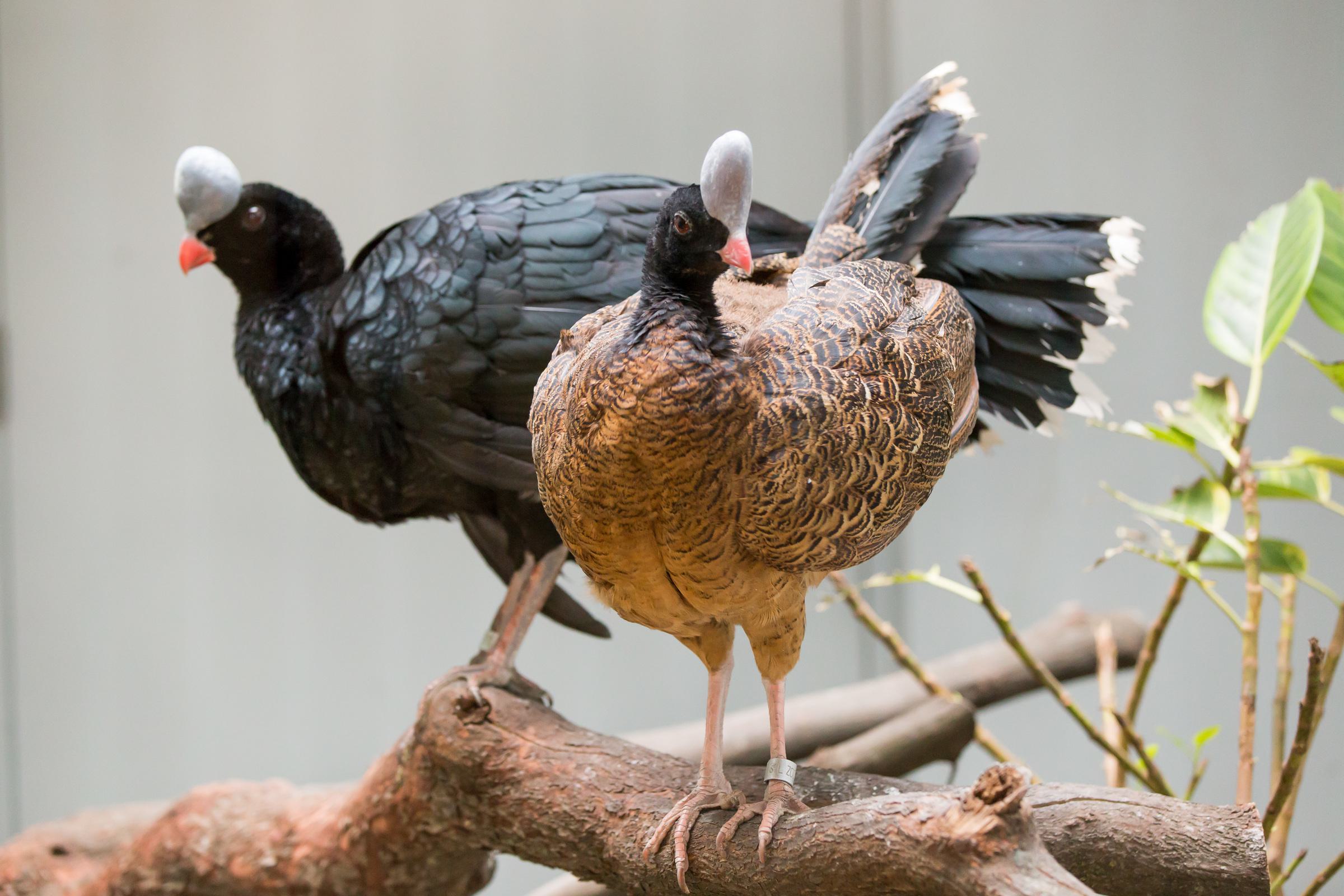We do not have lovebirds at the Saint Louis Zoo, but we do have several pairs of birds that you could call “lovebirds” for the affection and care they give one another.
Crested Wood Partridges: Big Red (male) and Little Green (female)
Crested wood partridges have a strong bond between their partners. The males are nothing but gentlemen. With this pair of birds at our Zoo, we often see the male offering the female food items. When they are fed their daily diet or treats, he offers her food until she is full and then will eat some himself. If they wander too far away from one another, they will vocalize and then one quickly returns to the other.
Photos: JoEllen Toler
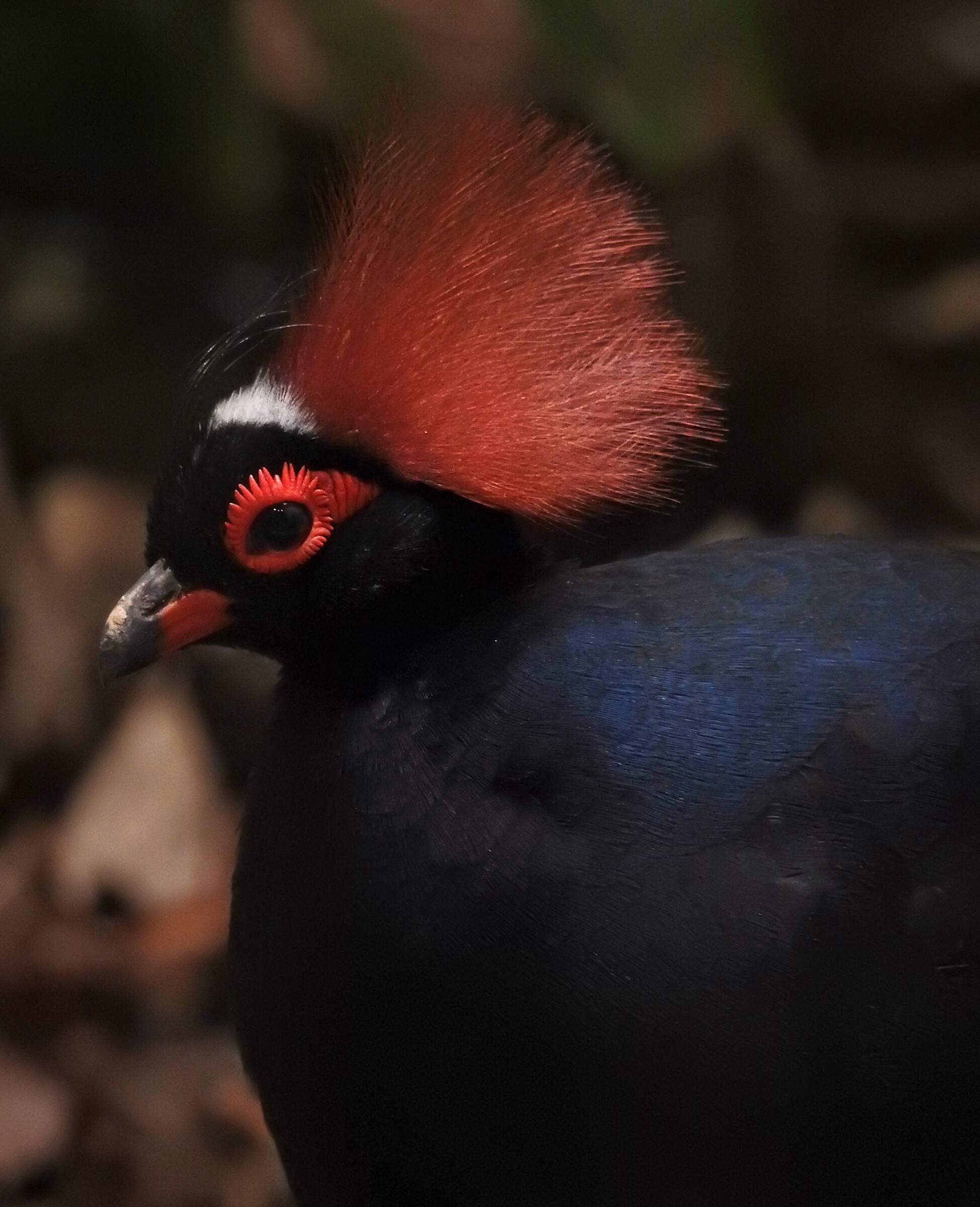

Bali Mynahs: Several Pairs
It is very common to see this species allopreen, which is when birds will preen one another. To preen is when birds clean their feathers with their beak. This species is also not shy about showing their affection for one another. They have a unique courtship display: they point their bill to the sky, raise the crest of feathers on their head, and bob up and down on the perching. While doing this, they also make unique vocalizations.
Photo: JoEllen Toler
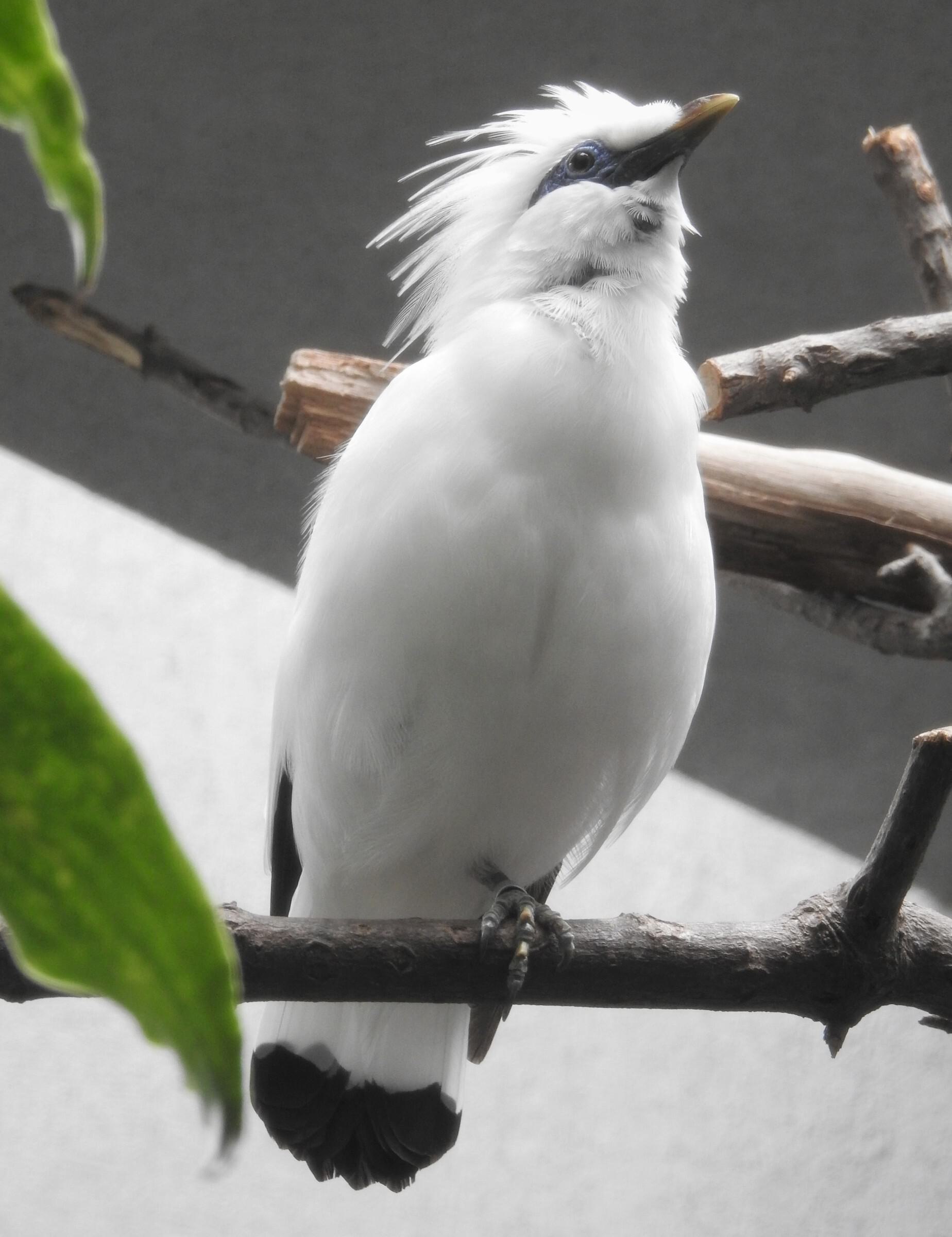
Trumpeter Swans: Charlie and Marilyn
Talk about couple’s goals! This pair takes the cake. Though Charlie and Marilyn are a newly formed pair, only having been together for one year, they already have a strong bond. Usually they are seen moving around the lake, side by side. They often engage in a courtship display where they spread their wings and shake them, sometimes while bobbing heads and trumpeting in unison. In the future, when eggs are laid, we predict that Charlie will be very protective and will defend Marilyn and their offspring by charging at any threat while hissing and smacking his wings. This can be very intimidating due to the size of trumpeter swans. It is dangerous to any threat; the force of the birds’ wing smack is strong enough to break bones.
Photo: JoEllen Toler
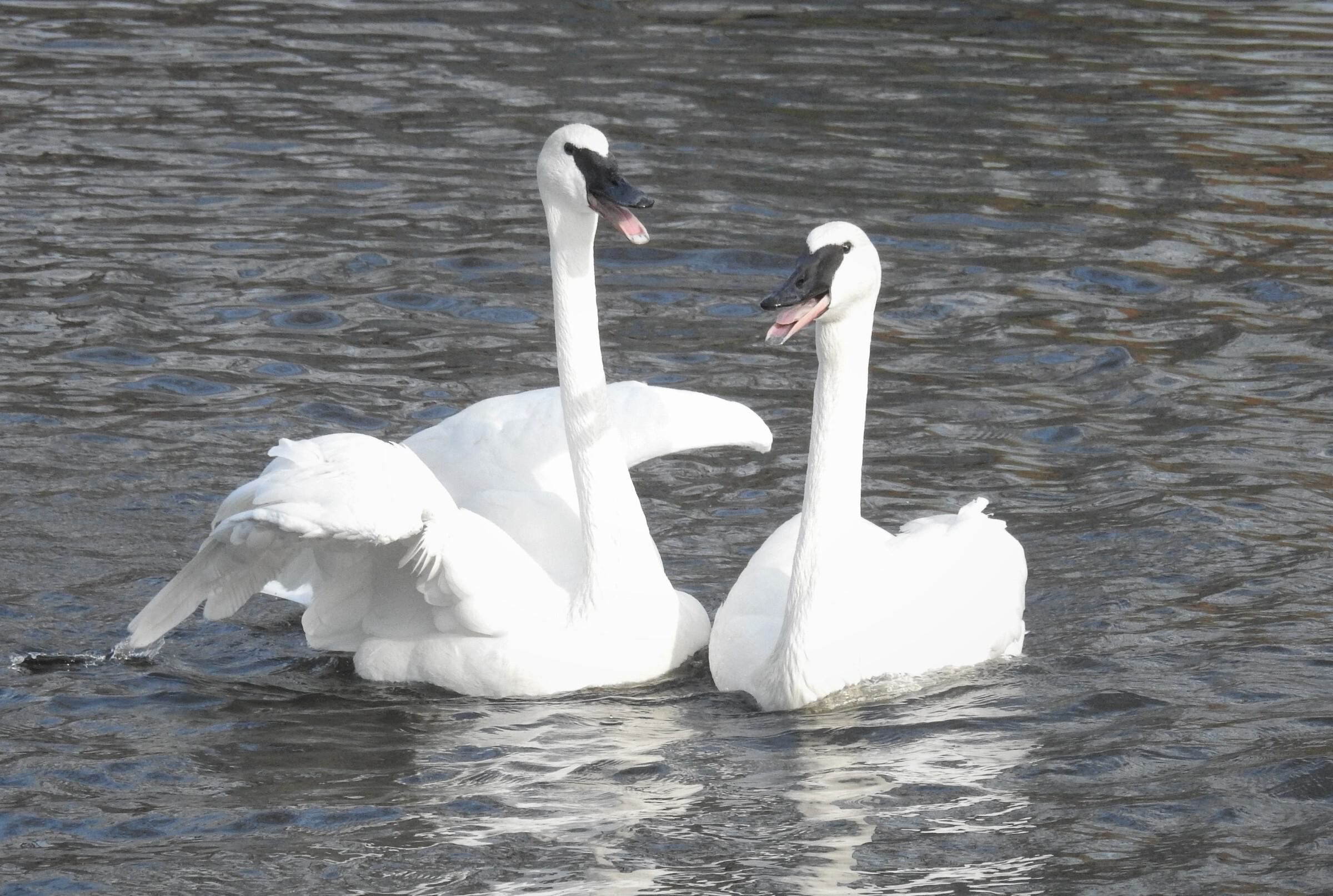
Rhinoceros Hornbills: Mom and Dad
These birds are very devoted to one another. We often hear them calling back and forth to each other. They also like to mirror each other’s behaviors. If one is bathing or preening, the other will then start bathing and preening. When one is eating, the other usually joins at the feed site. The males will often feed the females as part of their courtship. Once the female has laid an egg, she will seal herself into a log with mud and food items. She relies solely on the male to feed her while she is incubating the eggs and caring for the young chick(s). As the chick(s) grow, the space in the nest log gets tight, and the female will then break out of the log. She and the male will seal the chicks back in and continue to feed them until they are adult-sized and able to break out of the nest on their own.
Photo: JoEllen Toler
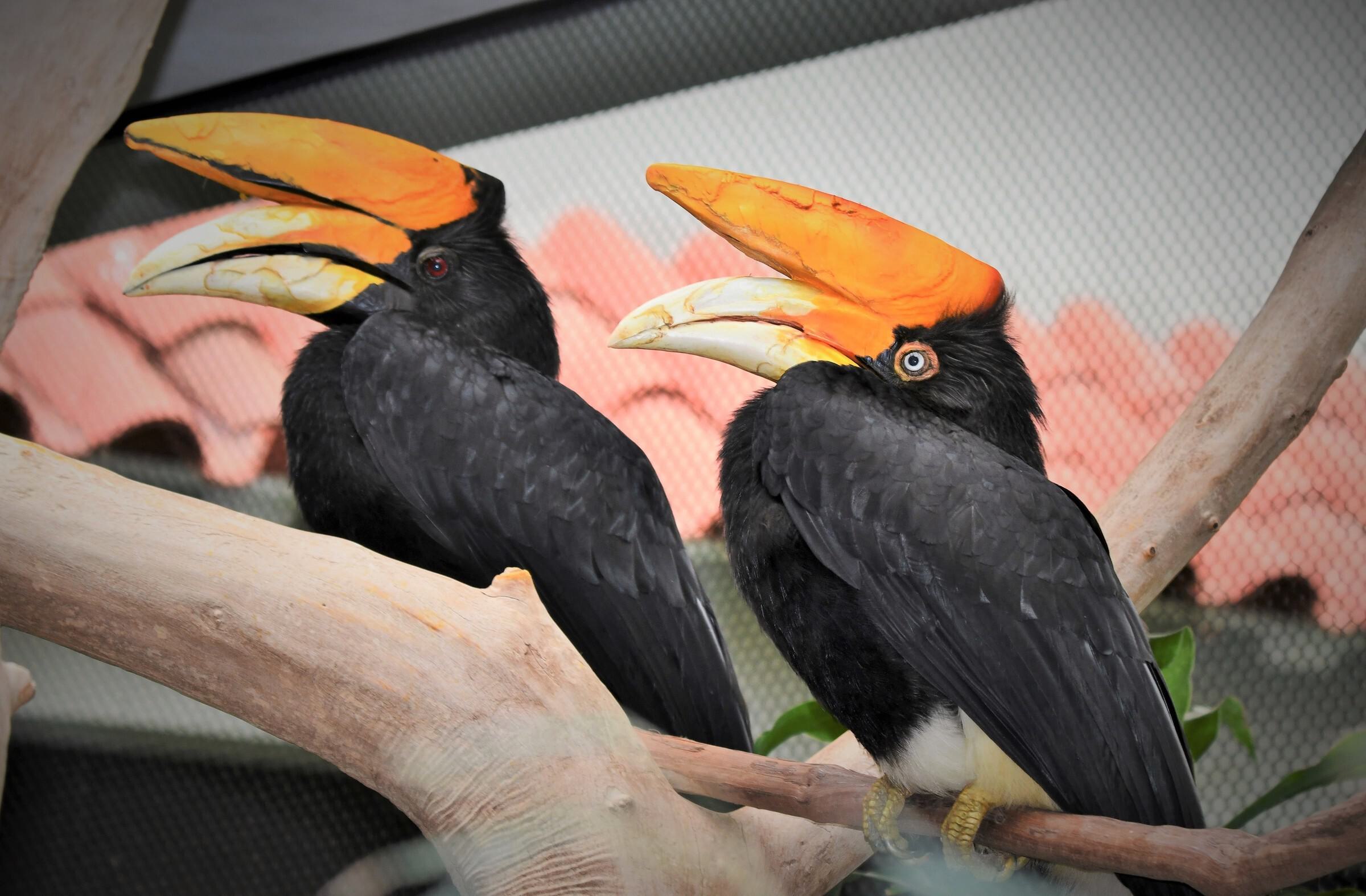
Humboldt Penguins: Cabo and Loca, Juan Thomas and Pequena, Argus and Coco, Selma and Paco
These couples can all be seen preening one another on habitat. These couples like to hang out near one another for most of the day. When the sun is out, you might even see them basking next to one another. To keep their bonds strong, they also stand upright and vocalize back and forth while fluffing their feathers up around their face and neck.
Pictured: Cabo and Loca
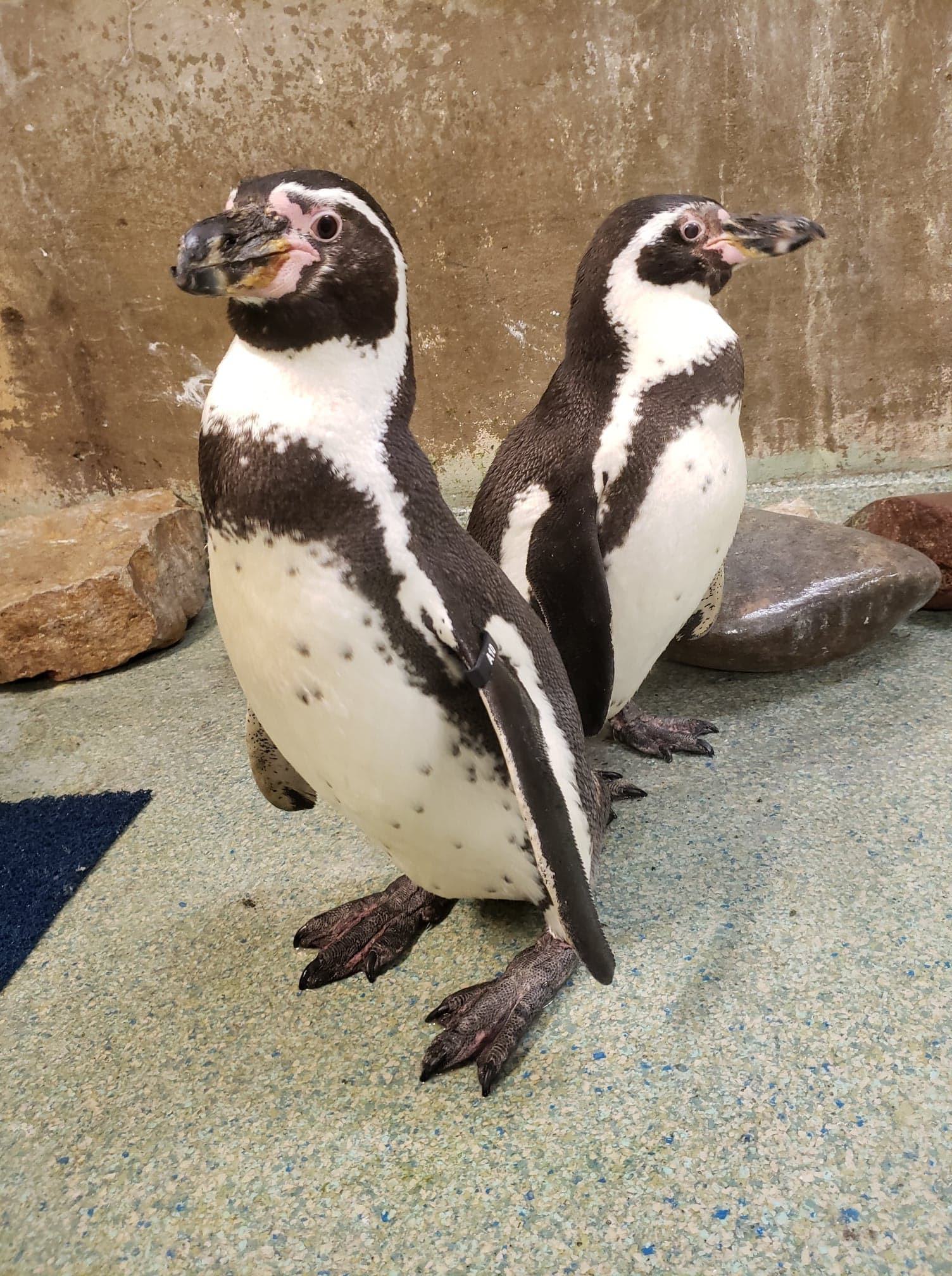
The male loves to serenade his female with low humming noises. He picks a nice open area to stand, then bends his head down, and puffs his chest up while making this low humming or booming vocalization. If that does not get his mate’s attention, then his treat sharing sure does. These birds love shelled peanuts as a treat. When offered these items, the male promptly breaks them open, holds them in his beak and runs over to feed his mate while making a high-pitched whistling noise. It is quite a sight to see.
Photo: KR Frey
